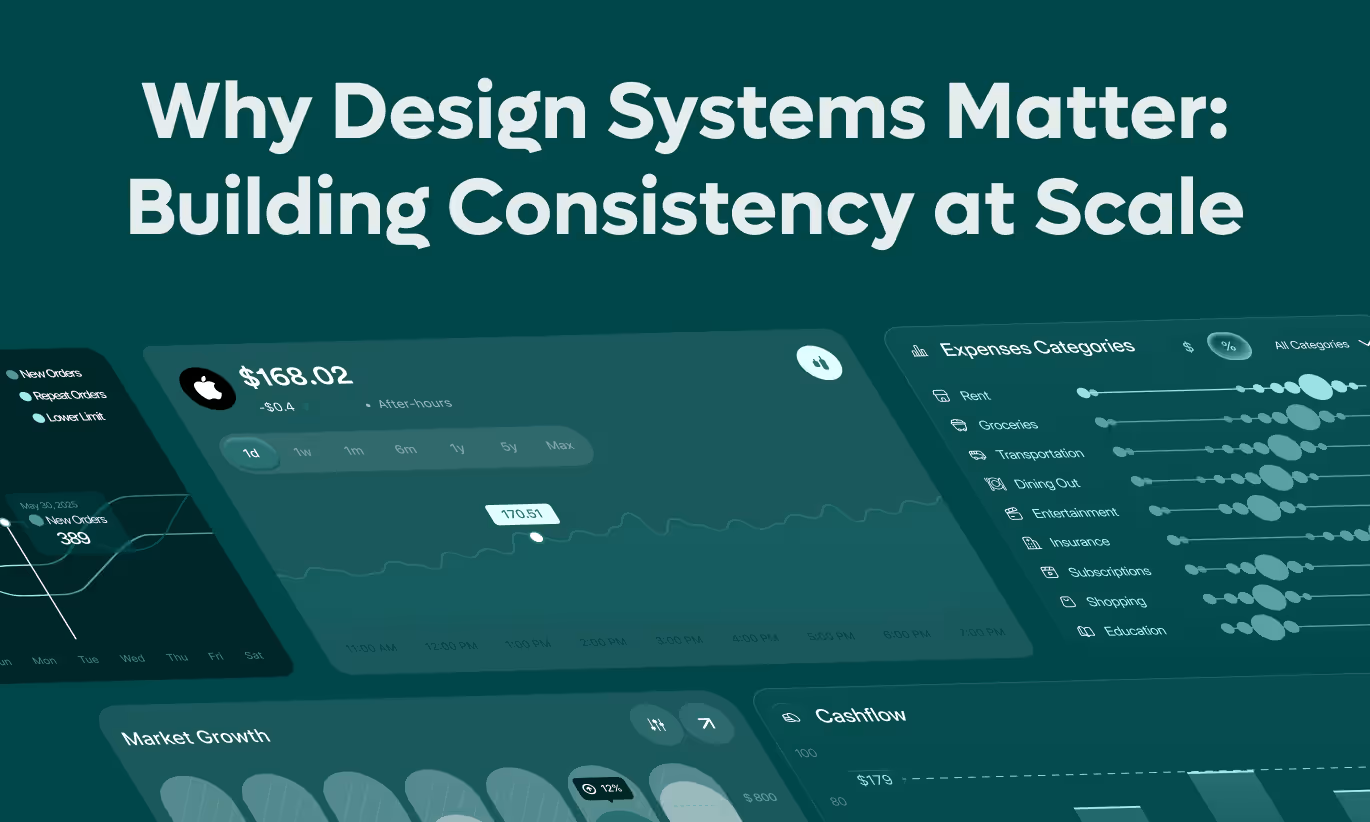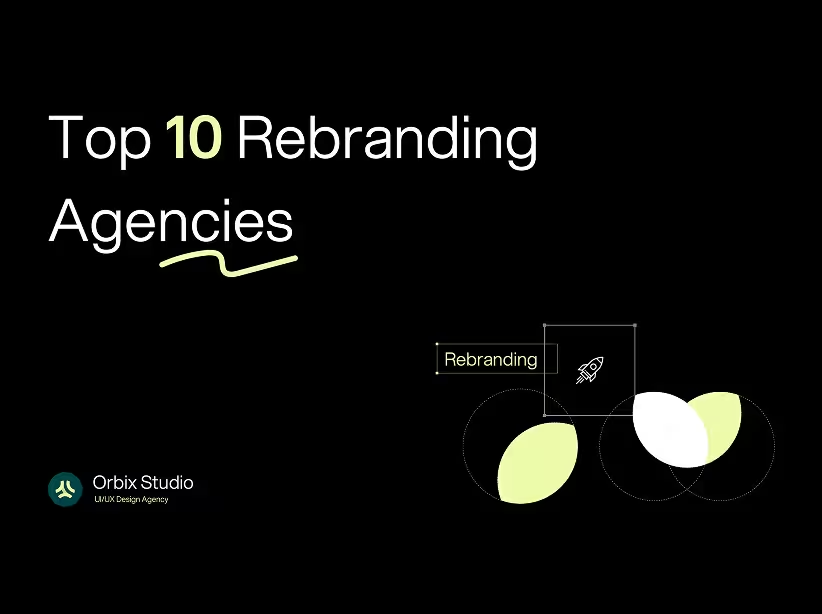Table of Contents

In today's fast-paced digital landscape, delivering consistent and seamless user experiences across multiple platforms and products has become a defining factor for successful brands. As organizations scale, maintaining design consistency becomes increasingly challenging. This is where design systems emerge as a game-changing solution.
What Is a Design System?
A design system is more than just a collection of UI components or a style guide. It's a comprehensive ecosystem that includes reusable components, design principles, guidelines, documentation, and best practices that enable teams to build cohesive digital experiences efficiently.
Think of it as the DNA of your digital products—a single source of truth that ensures every touchpoint with your brand feels familiar, intuitive, and professionally crafted.

The Business Case for Design Systems
1. Accelerated Development Cycles
Design systems dramatically reduce the time required to build new features and products. Instead of recreating buttons, forms, navigation patterns, and other UI elements from scratch, teams can leverage pre-built, tested components from a UI component library. This efficiency translates directly into faster time-to-market and reduced development costs.
2. Unmatched Consistency Across Platforms
Inconsistent user experiences confuse customers and dilute brand identity. A robust enterprise design system ensures that whether users interact with your mobile app, web platform, or desktop software, they encounter the same visual language, interaction patterns, and overall experience.
This consistent UX design builds trust and reinforces brand recognition.
3. Improved Collaboration Between Teams
Design systems bridge the gap between designers, developers, product managers, and stakeholders. With shared vocabulary, documented patterns, and clear guidelines, cross-functional teams can communicate more effectively and make faster decisions. The design system becomes a collaboration tool that aligns everyone around common goals.
4. Scalability Without Chaos
As your organization grows and your product portfolio expands, maintaining quality becomes exponentially harder without a systematic approach. Design systems provide the framework needed to scale gracefully—new team members can onboard faster, new products can be launched with consistency, and technical debt is minimized through standardization.
5. Enhanced Accessibility and Quality
Well-designed systems bake accessibility standards directly into components from the start. This ensures that all products built using the system meet WCAG guidelines and serve users of all abilities. Additionally, centralized testing and iteration of components improves overall quality across the board.
Key Components of an Effective Design System
Design Principles
The foundation of any great design system starts with clearly articulated design principles that reflect your brand values and guide decision-making.
UI Component Library
A comprehensive collection of reusable interface components—buttons, input fields, cards, modals, navigation elements, and more—all built to spec and ready for implementation.
Pattern Library
Beyond individual components, pattern libraries document common UI patterns and workflows, showing how components work together to solve specific user problems.
Design Tokens
Variables for colors, typography, spacing, and other design attributes that can be shared across platforms, ensuring visual consistency while allowing for platform-specific adaptations.
Documentation
Clear, comprehensive documentation is critical. It should include usage guidelines, code examples, accessibility notes, and best practices for implementing each component.
Governance Model
Successful design systems need clear ownership, contribution guidelines, and processes for evolution and maintenance.
Real-World Impact: Design System Benefits
Leading companies have demonstrated the transformative power of design systems:
- Airbnb's design system helped them maintain consistency across 100+ features while supporting rapid growth
- IBM's Carbon design system serves thousands of designers and developers, enabling them to build accessible products faster
- Google's Material Design has become an industry standard, proving that systematic approaches to design can scale globally
Organizations implementing design systems typically report:
- 40-60% reduction in design and development time for new features
- Significant decrease in design inconsistencies across products
- Improved designer and developer satisfaction
- Better product quality and user satisfaction scores
Building Your Design System: Where to Start
1. Audit Your Current State
Begin by documenting existing patterns, components, and inconsistencies across your current products. This audit reveals where standardization will have the greatest impact.
2. Start Small and Essential
Don't try to build everything at once. Focus on the most commonly used components first—buttons, forms, typography, colors. Expand gradually based on team needs.
3. Involve All Stakeholders
Design systems succeed when they're built collaboratively. Include designers, developers, product managers, and accessibility experts from the beginning.
4. Prioritize Documentation
Components without documentation won't be used correctly. Invest in clear, practical documentation that includes visual examples, code snippets, and implementation guidance.
5. Establish Governance
Define how the system will evolve. Who can contribute? How are changes reviewed and approved? How will the system be maintained long-term?
6. Measure and Iterate
Track adoption, gather feedback, and continuously improve. A design system is never "finished"—it evolves with your organization's needs.
Common Challenges and How to Overcome Them
Adoption Resistance: Some teams may resist using the design system, preferring custom solutions. Combat this by demonstrating value through quick wins and ensuring the system truly solves their problems.
Keeping it Updated: Design systems can become outdated quickly. Establish clear ownership and dedicate resources to maintenance and evolution.
Balancing Flexibility and Consistency: Too rigid, and teams will work around the system. Too flexible, and you lose consistency. Find the right balance through variants and thoughtful customization options.
Platform-Specific Needs: Different platforms (web, iOS, Android) have unique requirements. Use design tokens and adaptive components that respect platform conventions while maintaining brand consistency.
The Future of Design Systems
As design tools become more sophisticated and AI-assisted design gains traction, design systems will become even more powerful. We're moving toward:
- Automated component generation that maintains system consistency
- Smart documentation that updates itself based on code changes
- Predictive design suggestions that guide designers toward system-compliant solutions
- Cross-platform design tokens that adapt intelligently to any context
Conclusion
Design systems are no longer a luxury reserved for large enterprises—they're a necessity for any organization serious about delivering consistent, high-quality digital experiences at scale. The design system benefits extend far beyond visual consistency, impacting efficiency, collaboration, quality, and ultimately, business success.
Whether you're building your first enterprise design system or optimizing an existing one, the investment pays dividends in faster development, better user experiences, and stronger brand consistency.
At Orbix Studio, we help organizations design, build, and implement design systems that scale with their ambitions. From initial audits to full implementation and governance, we partner with teams to create design systems that drive real business value.





